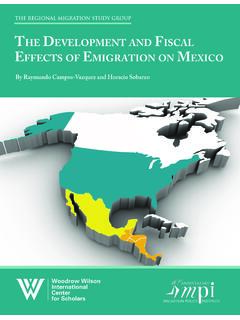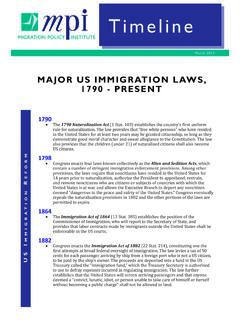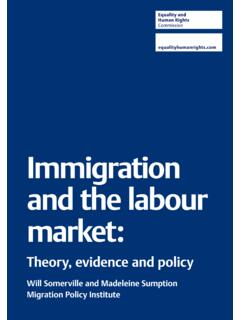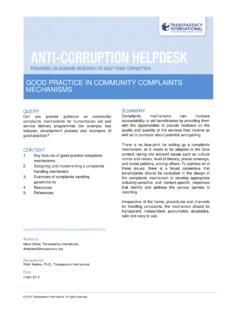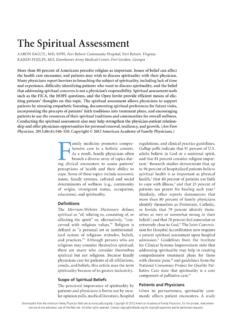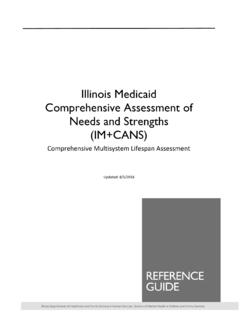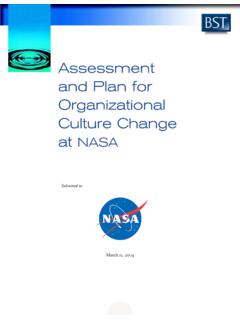Transcription of The Impact of Discrimination on the Early Schooling ...
1 The Impact of Discrimination on the Early Schooling Experiences of Children from Immigrant Families J ennifer K eys A dair NATIONAL CENTER ON IMMIGRANT INTEGRATION POLICY. The Impact of Discrimination on the Early Schooling Experiences of Children from Immigrant Families Jennifer Keys Adair September 2015. Acknowledgments This report was prepared for a workshop on the Impact of Discrimination on young children of immigrants, held at the Migration Policy Institute (MPI) on November 20, 2014, with the support of the Foundation for Child Development (FCD). This meeting was among a series of workshops organized by MPI for FCD's Young Schol- ars Program, which supports research and researchers focused on young children of immigrants.
2 This series explores emerging policy and research topics for children from birth to age 10 in immigrant families, convening young scholars among other academics, policy experts, and government officials working in this field. The author wishes to thank FCD for funding research that contributed to this re- port, specifically the Agency and Young Children (AYC) study that focuses on young Latino children of immigrants and their families. She thanks Kiyomi Sanchez-Suzuki Colegrove, who was a research assistant working with Latino immigrant parents on the AYC study. She would also like to thank her colleagues on the Children Crossing Borders (CCB) study Joseph Tobin and Angela Arzubiaga as well as the Spencer Foundation and the Bernard Van Leer Foundation which supported the CCB project.
3 She also wishes to thank the immigrant parents who have shared their ideas and concerns about their young children beginning the long and often complicated journey of Schooling . Their powerful experiences and ideas gathered through conversation, focus groups, and interviews inform this report. Finally, deep- est appreciation to Randy Capps, Michael Fix, and Kate Hooper at MPI whose at- tention to detail and challenging questions helped this report become more useful and meaningful. 2015 Migration Policy Institute. All Rights Reserved. Cover Design and Layout: Liz Heimann, MPI. No part of this publication may be reproduced or transmitted in any form by any means, electronic or mechanical, including photocopy, or any information storage and retrieval system, without permission from the Migration Policy Institute.
4 A full-text PDF of this document is available for free download from Information for reproducing excerpts from this report can be found at Inquiries can also be directed to: Permissions Department, Migration Policy Institute, 1400 16th Street, NW, Suite 300, Washington, DC 20036, or by contacting Suggested citation: Adair, Jennifer Keys. 2015. The Impact of Discrimination on the Early Schooling Experiences of Children from Immigrant Families. Washington, DC: Migration Policy Institute. Table of Contents Executive 1. I. Introduction .. 3. II. How Discrimination in School Affects Young 4. A. The Effects of Discrimination on Children's Development and Academic 4.
5 B. Discrimination and Parental Engagement in 5. C. The Role of Local Contexts and Attitudes .. 5. III. Types of Discrimination Experienced .. 6. A. Personal Forms of Discrimination .. 6. B. Structural Forms of 9. IV. Reasons for Discrimination in the Early School 12. A. Lack of Meaningful Connections with Immigrant Communities .. 13. B. Focus on Immigrant Families' Deficits Rather than Assets .. 13. C. Inadequate Teacher Preparation and Recruitment .. 14. D. Testing Pressures in the Early Grades .. 15. E. Negative Labels and Concerns over School Readiness .. 16. V. 16. Works 20. About the 27. MIGRATION POLICY INSTITUTE. Executive Summary Immigrant families typically first encounter the educational system when their children enter pre- school or kindergarten.
6 The experiences these children have in their first classrooms are foundational to how they think about themselves as learners, students, and members of the larger communities around them. When schools view children of immigrants positively and offer them intellectual, academic, creative, and culturally responsive learning experiences children are more likely to form positive con- nections with the larger society. Conversely, children struggle to overcome negative self-perceptions when schools focus on their deficits for example, lack of English ability or knowledge of culture. Young children of immigrants may experience Discrimination personally, through their individual treat- ment and the kinds of learning experiences schools offer them.
7 They may also experience Discrimination structurally, through long-term institutional practices that affect their personal development and aca- demic trajectories. Personal Discrimination against children of immigrants in schools primarily takes four forms: 1. Negative interactions with school staff and peers. These include negative comments about children's accents and appearances, impatience with those who struggle to express themselves in English, and tougher discipline than that used with other students. 2. Narrow learning experiences. Under pressure to improve tests scores, teachers may focus pri- marily on command-driven tasks and rote learning, leaving little room for more creative, child- centered instruction that builds academic engagement, problem-solving skills, and self-esteem.
8 Schools often track young children of immigrants into English as a Second Language (ESL) class- rooms where inadequately qualified teachers or paraprofessionals provide learning experiences focused on basic English-literacy tasks. 3. Low educational expectations. Children of immigrants often enter school with negative labels: they don't know English or aren't ready for school. They may have cognitive or social skills that schools undervalue or don't recognize. Their academic and social skills may decline with school- ing, as they perceive the low expectations of their teachers and peers. 4. Devaluation of primary languages.
9 Educators often devalue bilingualism and home-language skills. For example, they may view the ability to switch between English and Spanish as a prob- lem to be fixed rather than a skill to be developed. Instead of building on children's multiple, complex language and cultural skills, educators often attempt to acculturate them away from home languages and cultures. Studies have shown that strong ties to families and co-ethnic com- munities support learning, while alienation from them inhibits cognitive and socioemotional development. Four forms of structural Discrimination in schools are discussed: 1. School segregation.
10 Children of immigrants face three different types of segregation in school settings: by race/ethnicity ( , Latino versus non-Latino), language, and income. In Texas, for example, nearly one-quarter of schools have majority-Latino, English-learner, and low-income student bodies. Thus, children of immigrants often are concentrated in schools with low expo- sure to English-fluent students and large numbers of other low-income students who may also face academic disadvantages. 2. Lack of high-quality educational resources. Many children of immigrants attend schools in high-poverty areas that struggle with less-experienced and less-skilled teachers, fewer resources, and lower-than-average academic outcomes.




